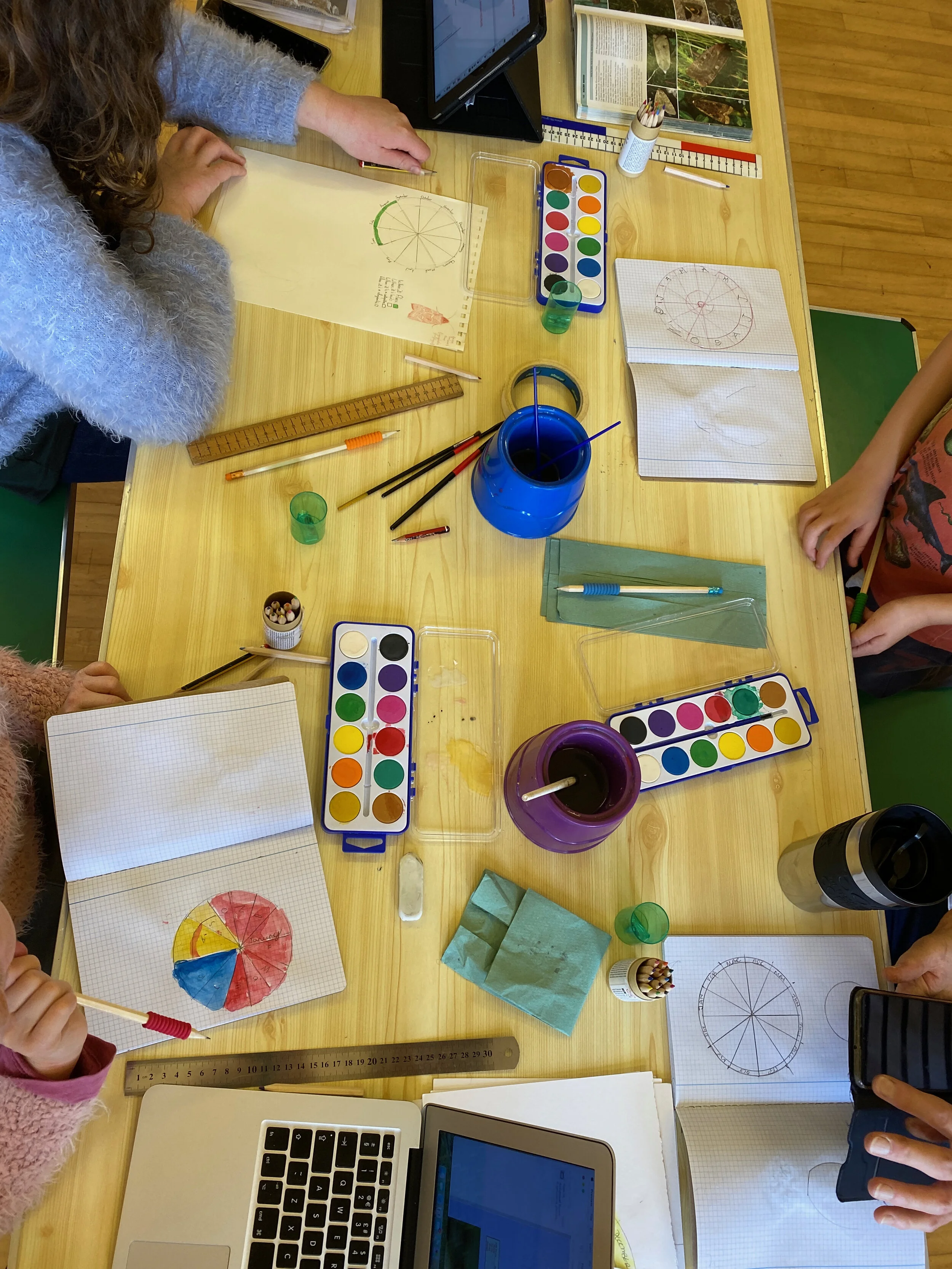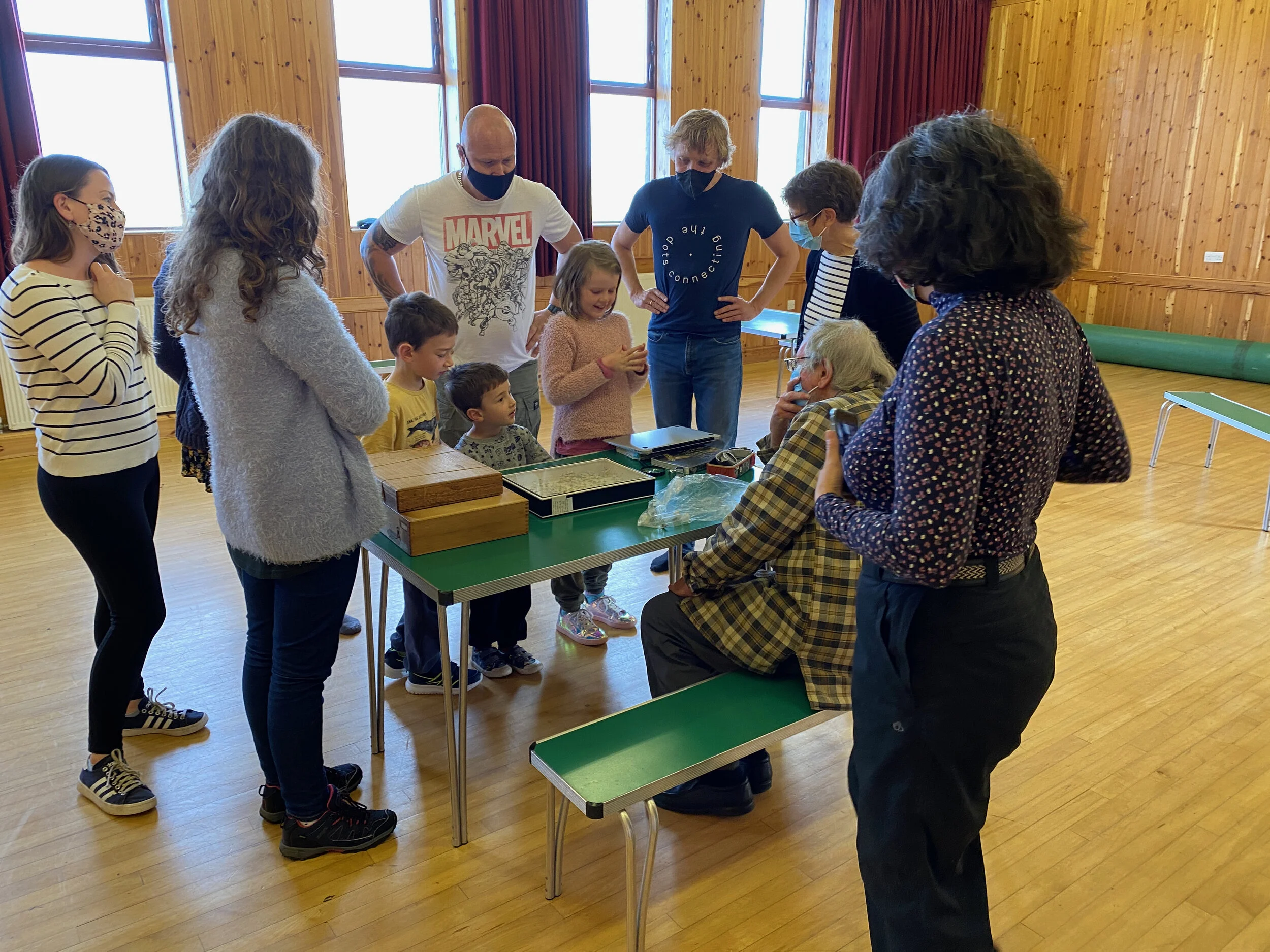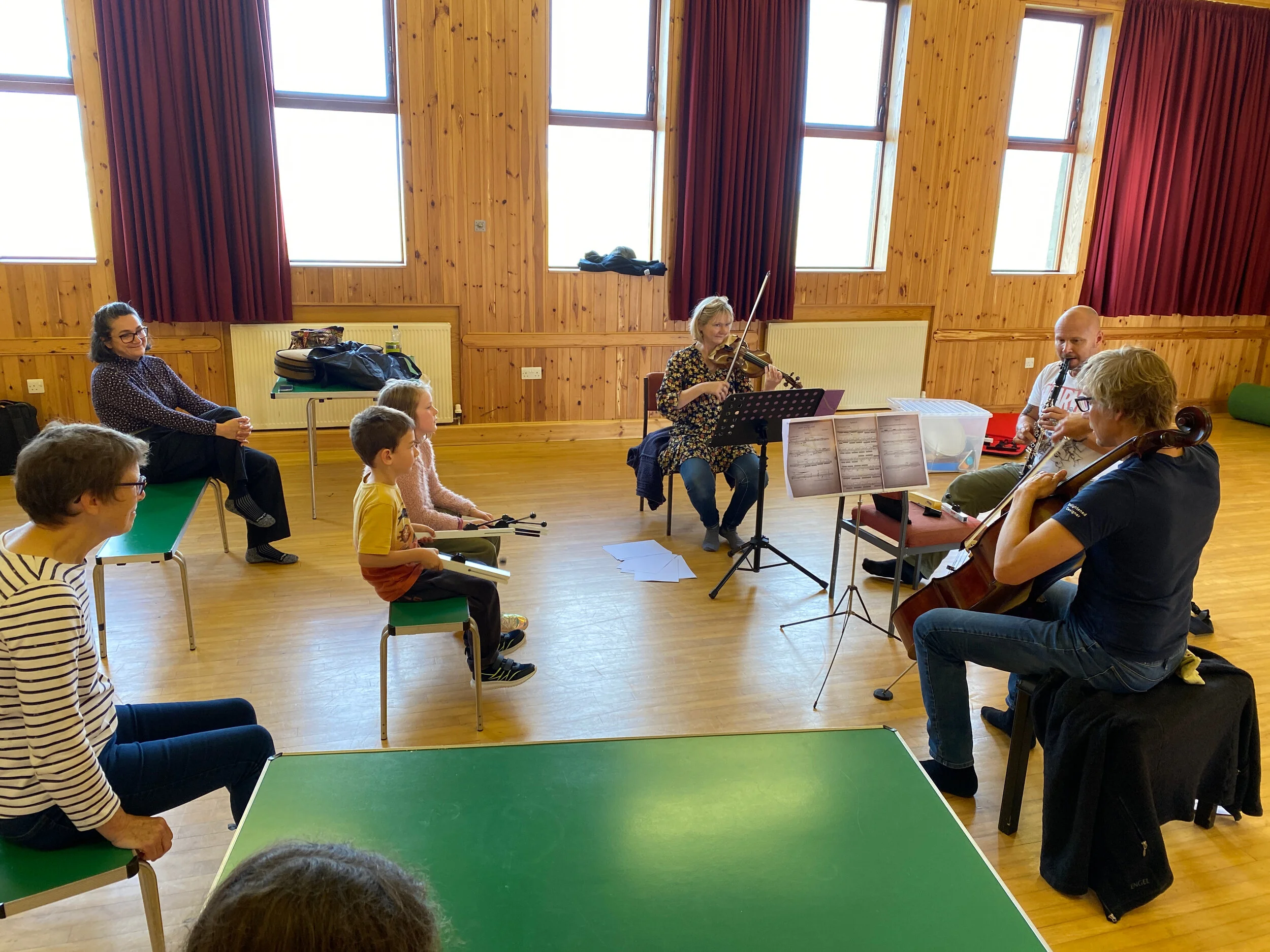Friday 24 September
Moths close-up, phenology wheels and instrument introductions
There are still restrictions in Scottish schools - no non-essential visitors - we base our residency in the Hall which has plenty of space and air, and the school sessions happen in there. The team has lateral flow tested 3 days and 24 hours before travel as per Scottish government guidelines for travel to islands. We also test while we are on the isle.
Fair Isle has long-standing records of moths discovered there, largely recorded by Nick Riddiford and Pat Thomson. Nick very kindly came to the Hall with his collection of moths (some alive) so we could all inspect them close up.
The children are accustomed to going to look at moth-traps with Pat and are already citizen-scientists. We felt we might well learn from them, and perhaps see a Fair Isle demonstration of how to accompany non-human species in a more respectful way.
We gave each of the children their own field notebooks, with coloured pencils and paintboxes to fill the pages with their observations. Katherine has a stack of reference books and we start by each choosing a moth and discovering as much as possible about its life cycle. Katherine explains how to create a phenology wheel and the children log the moth life stages against the relevant months in their wheels.
In the afternoon Stu, Caroline and Chris introduce their instruments in detail. The materials and types of wood used. The histories. The reasons why the instruments are built as they are - a demonstration of sounds and possibilities.
They play some Biber “Sonata Representativa” - asking the children to guess which animals were represented in there. Cue much hilarity but also a high hit rate on accurate guesses!
The children then listen to a couple of movements from the Saariaho piece “Sept Papillons” for cello - followed by an improvisation on the piece, adding violin, clarinet and the children’s own chimes, creating an extended ensemble. Their listening skills are extraordinary.





